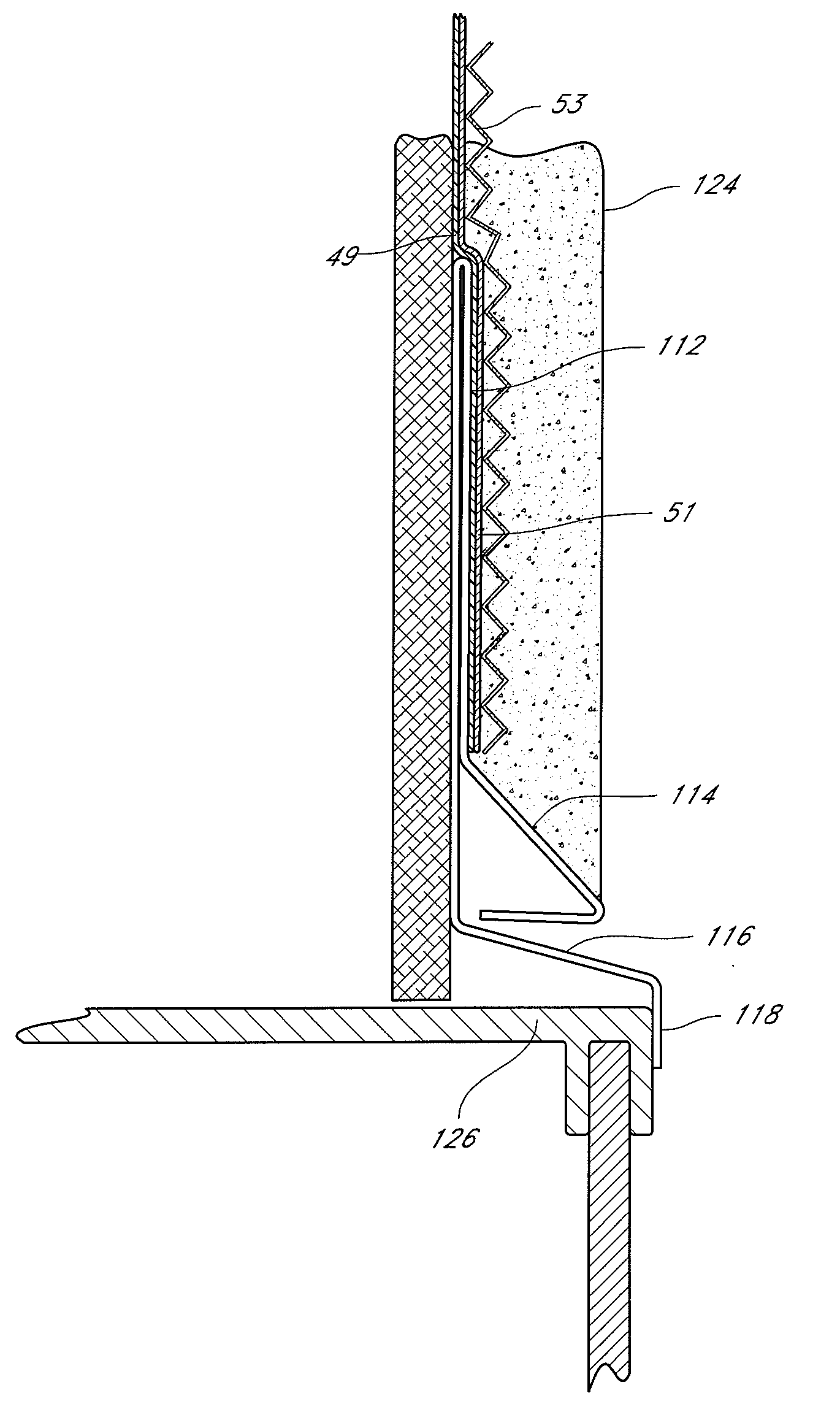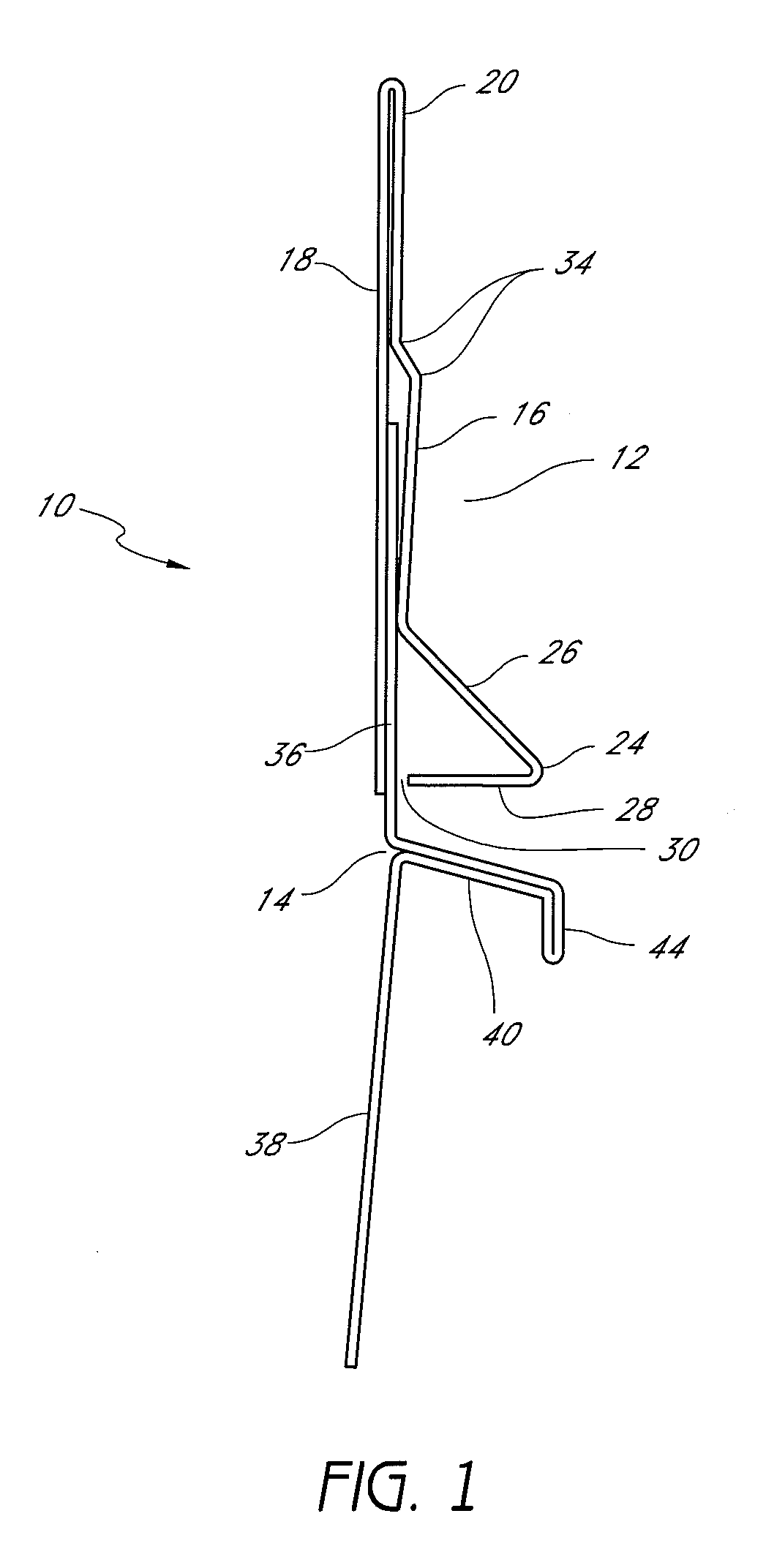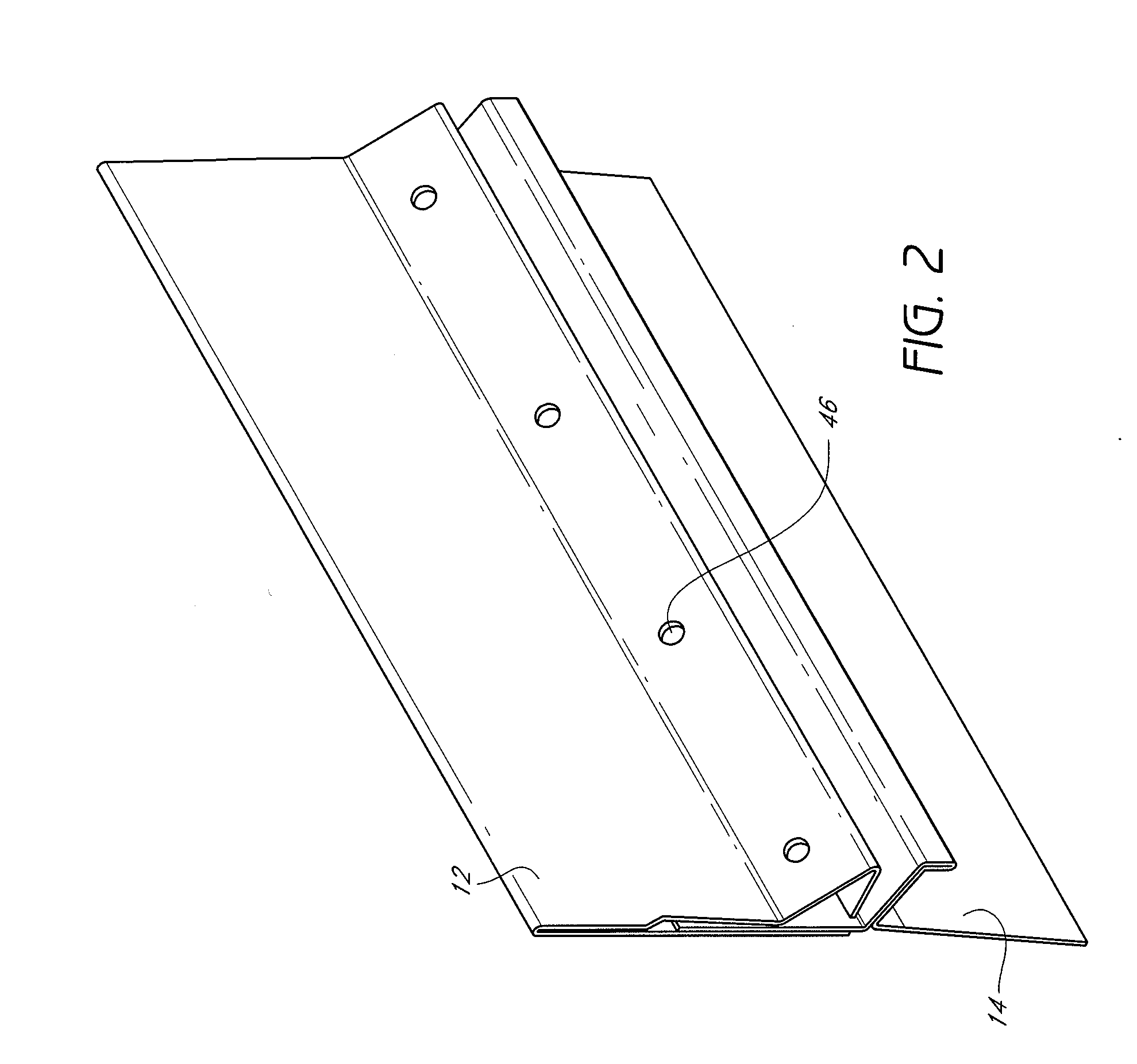Building construction product directed to minimizing water accumulation at floor joints
- Summary
- Abstract
- Description
- Claims
- Application Information
AI Technical Summary
Benefits of technology
Problems solved by technology
Method used
Image
Examples
Embodiment Construction
[0032]FIG. 1 depicts one embodiment of a two-piece expansion joint 10 which generally comprises an upper piece 12 and a lower piece 14. The upper piece comprises a front leg 16 and may also include a back leg 18 in certain embodiments. The front leg 16 acts as a flashing leg and at the top of the front leg there is a fastening flange 20. Below the fastening flange 20 and flashing portion of the front leg 16 is a sloped screed 24. The sloped screed 24 includes a sloped portion 26 and a bottom portion 28. A space 30 is provided between the bottom portion 28 of the sloped screed 24 and the male leg 36 so that water draining through a series of weep holes can escape out of the accessory. Near the fastening flange 20, there is a series of bends 34 in the front leg which forces the sloped screed 24 to press up against the male leg 36 of the lower piece 14.
[0033]The lower piece 14 of the embodiment shown in FIG. 1 generally comprises a male leg 36, a fastening leg 38, and a flashing leg 40...
PUM
 Login to View More
Login to View More Abstract
Description
Claims
Application Information
 Login to View More
Login to View More - R&D
- Intellectual Property
- Life Sciences
- Materials
- Tech Scout
- Unparalleled Data Quality
- Higher Quality Content
- 60% Fewer Hallucinations
Browse by: Latest US Patents, China's latest patents, Technical Efficacy Thesaurus, Application Domain, Technology Topic, Popular Technical Reports.
© 2025 PatSnap. All rights reserved.Legal|Privacy policy|Modern Slavery Act Transparency Statement|Sitemap|About US| Contact US: help@patsnap.com



